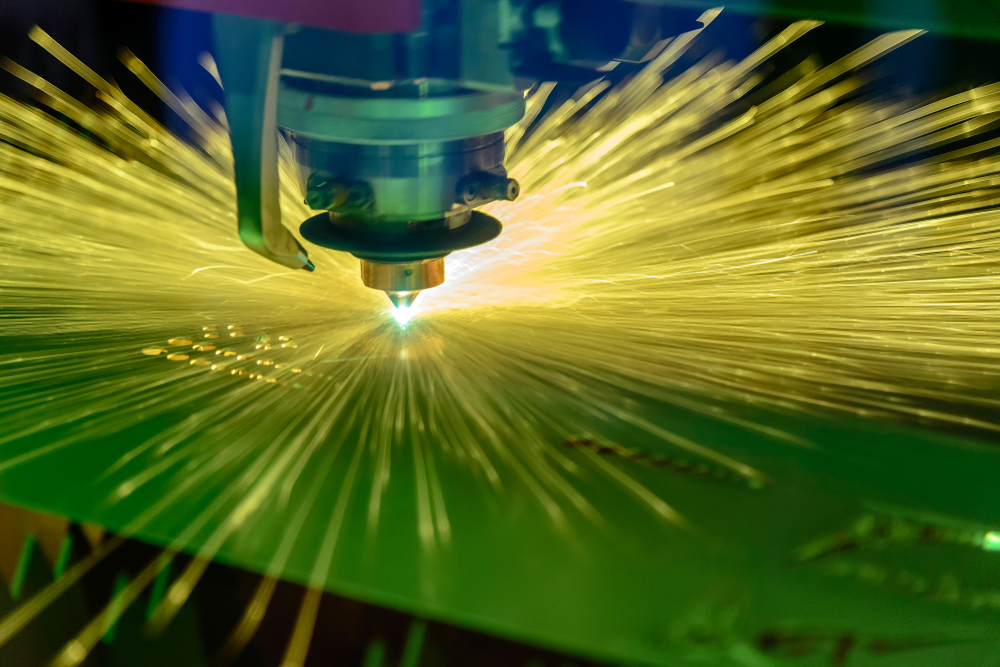Laser Cutting Limitations: Can it Cut Through Thick Steel?
Laser cutting is an excellent piece of equipment for fabricating and manufacturing steel parts, but it has its limitations. Although laser-cut steel can be used for various projects, some thicknesses cannot be cut through with this technology, and when attempted, it can create a diminished finish.
In this article, KNS Metals takes a look at the laser cutting thickness limit based on a variety of factors, including wattage and the type of metal.
What is a Metal Laser Cutter?
A laser cutter is a powerful tool used to cut various metals and alloys, particularly steel. It uses high-powered lasers to precisely cut through the material faster than traditional cutting methods. The laser beam is focused and moved via mirrors or other devices to achieve the desired shape, allowing for intricate designs that would otherwise be difficult or impossible with other types of tools.
What are the Benefits of Introducing a Metal Laser Cutter to Your Project?
Metal laser cutters are increasingly gaining popularity in the manufacturing industry due to their ability to produce high-precision parts with minimal waste. Laser cutting technology is a versatile tool that can be used for a variety of applications, including automotive, aerospace and electronics.
Benefits include:
- Precision: Metal laser cutters provide precision cuts with extremely accurate tolerances, allowing manufacturers to quickly create high-quality components without wasting materials or time.
- Versatility: The versatility of this technology allows it to be applied to almost any material, from thin sheet metals up to thick plates and even hardwoods like oak. It can also be used for creating complex shapes and delicate features.
- Speed: Laser cutting is much faster than traditional methods of cutting, allowing manufacturers and fabricators to quickly create and manipulate parts in a fraction of the time, without sacrificing quality or accuracy.
- Cost-Effectiveness: Metal laser cutters are also highly cost-effective due to their low operating costs and minimal material waste. The speed at which they can produce parts also helps reduce overall manufacturing times, resulting in lower costs and higher profits.
- Safety: The lasers used in metal laser cutters are powerful but do not produce any excess heat, smoke or sparks during operation, making them safe to use in many work environments where other tools may be hazardous due to their emissions.
What is the Laser Cutting Thickness Limit?
While metal laser cutters may be highly precise tools and can cut through thick steel, their capabilities have some limitations. Users will find that the thickness of the steel that a laser cutter can cut through will depend on the power of the laser itself, as well as the type of steel being used.
The reason for this is that thicker steel requires more laser power, which can result in slower cutting speeds and increased heat generation, affecting the quality of the cut and requiring the use of specialised cutting techniques or cooling systems to prevent the steel from warping or melting. Some types of steel, such as stainless steel, are more reflective than others, which can cause the laser beam to bounce off the steel surface, making stainless steel sheets with greater thickness more challenging to cut through.
General Laser Cutting Thickness Limit Guides Based on Wattage
When fabricating different types of steel, the laser’s power must be strong enough to create an intense heat that melts or vaporises the cut material. The higher the wattage of the laser, the more powerful the beam it produces, which translates into thicker materials that can be cut by lasers. Depending on the type of material being cut, the laser’s wattage will vary.
For example, a low-wattage laser may not be able to cut stainless steel sheet thickness. A standard reference for wattage and the maximum thickness of stainless steel sheets and other metals includes:
| Type of Laser Cutting Machine | Maximum Thickness of Carbon Steel | Maximum Thickness of Stainless Steel | Maximum Thickness of Aluminium Plate | Maximum Thickness of Copper Plate |
| 500W | 6mm | 3mm | 2mm | 2mm |
| 1000W | 10mm | 5mm | 3mm | 3mm |
| 2000W | 16mm | 8mm | 5mm | 5mm |
| 3000W | 20mm | 10mm | 8mm | 8mm |
Learn More on the Applications of Metal Laser Cutters with KNS Metals
KNS Metals offer professional metal laser cutting services for our clients throughout Melbourne and its surrounds. If you would like more information, or to discuss your project, please feel welcome to contact our team today.


